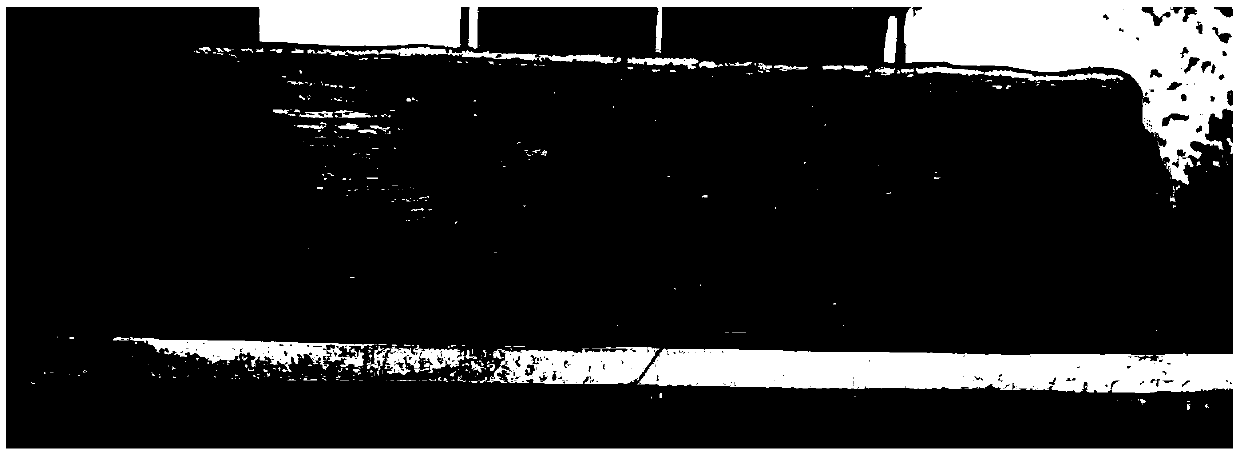MIG-TIG composite additive method
A technology of additive manufacturing and robotics, applied in the field of additive manufacturing, can solve the problems of different accuracy and efficiency of additive methods, low arc accuracy, uneven surface, etc., to improve accuracy and quality, improve additive accuracy, and increase The effect of material quality
- Summary
- Abstract
- Description
- Claims
- Application Information
AI Technical Summary
Problems solved by technology
Method used
Image
Examples
Embodiment 1
[0036] The welding wire used by the MIG additive robot is ER130S-G high-strength steel welding wire with a diameter of 1.2mm; the TIG additive robot does not add welding wire; the substrate is a 6mm thick 304 stainless steel substrate; the shielding gas is pure argon;
[0037] Step 1: According to the size and shape of the workpiece to be formed, use CAD to build the model, and automatically generate the trajectory of the additive material by the computer;
[0038] Step 2: Turn on the power, wait for the MIG-TIG composite additive device to be ready, turn on the shielding gas, fix the substrate in the water-cooling device with a flexible fixture, clean the substrate, preheat the substrate to 100°C, and turn on the water-cooling device;
[0039] Step 3: Set the welding parameters, among which the MIG additive parameters are: wire feeding speed is 7.5mm / min, welding speed is 11mm / s, shielding gas flow rate is 20L / min; TIG additive parameters are: welding speed is 2mm / s, The weld...
Embodiment 2
[0047] The welding wire used by the MIG additive robot is ER130S-G high-strength steel welding wire with a diameter of 1.2mm; the welding wire used by the TIG additive robot is 316L stainless steel wire with a diameter of 1.2mm; the substrate is a 6mm thick 304 stainless steel substrate; the shielding gas is pure argon;
[0048] Step 1: According to the size and shape of the workpiece to be formed, use CAD to build the model, and automatically generate the trajectory of the additive material by the computer;
[0049]Step 2: Turn on the power, wait for the MIG-TIG composite additive device to be ready, turn on the shielding gas, fix the substrate in the water-cooling device with a flexible fixture, clean the substrate, preheat the substrate to 100°C, and turn on the water-cooling device;
[0050] Step 3: Set welding parameters, among which MIG additive parameters are: wire feeding speed is 7.5mm / min, welding speed is 11mm / s, shielding gas flow rate is 20L / min; TIG additive para...
Embodiment 3
[0061] The welding wire used by the MIG additive robot is ER130S-G high-strength steel welding wire with a diameter of 1.2mm; the welding wire used by the TIG additive robot is 316L stainless steel wire with a diameter of 1.2mm; the substrate is a 6mm thick 304 stainless steel substrate; the shielding gas is pure argon;
[0062] Step 1: According to the size and shape of the workpiece to be formed, use CAD to build the model, and automatically generate the trajectory of the additive material by the computer;
[0063] Step 2: Turn on the power, wait for the MIG-TIG composite additive device to be ready, turn on the shielding gas, fix the substrate in the water-cooling device with a flexible fixture, clean the substrate, preheat the substrate to 100°C, and turn on the water-cooling device;
[0064] Step 3: Set welding parameters, among which MIG additive parameters are: wire feeding speed is 7.2mm / min, welding speed is 10mm / s, shielding gas flow rate is 20L / min; TIG additive par...
PUM
 Login to View More
Login to View More Abstract
Description
Claims
Application Information
 Login to View More
Login to View More - R&D Engineer
- R&D Manager
- IP Professional
- Industry Leading Data Capabilities
- Powerful AI technology
- Patent DNA Extraction
Browse by: Latest US Patents, China's latest patents, Technical Efficacy Thesaurus, Application Domain, Technology Topic, Popular Technical Reports.
© 2024 PatSnap. All rights reserved.Legal|Privacy policy|Modern Slavery Act Transparency Statement|Sitemap|About US| Contact US: help@patsnap.com










